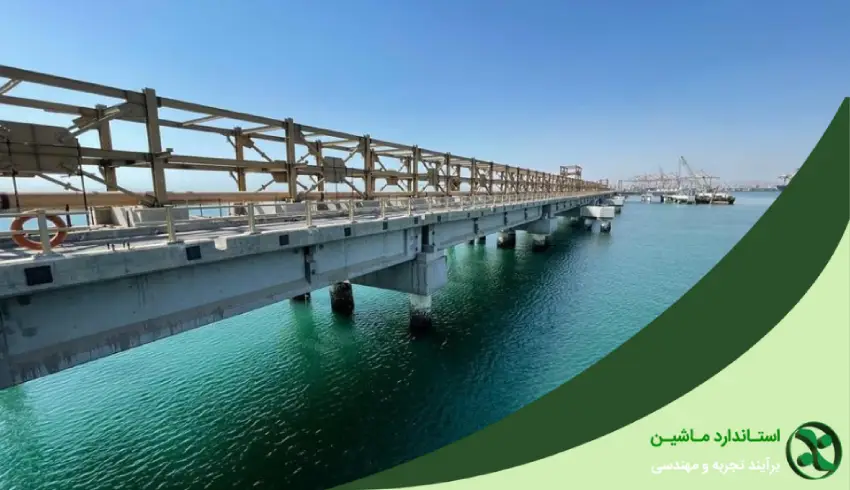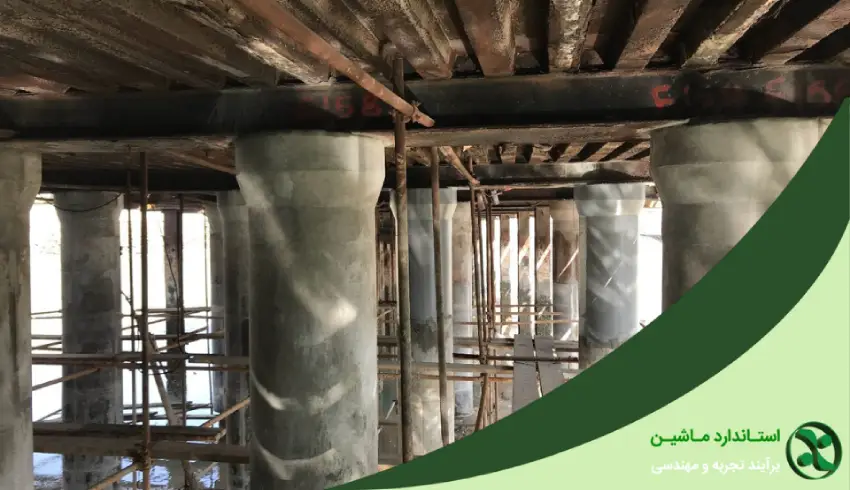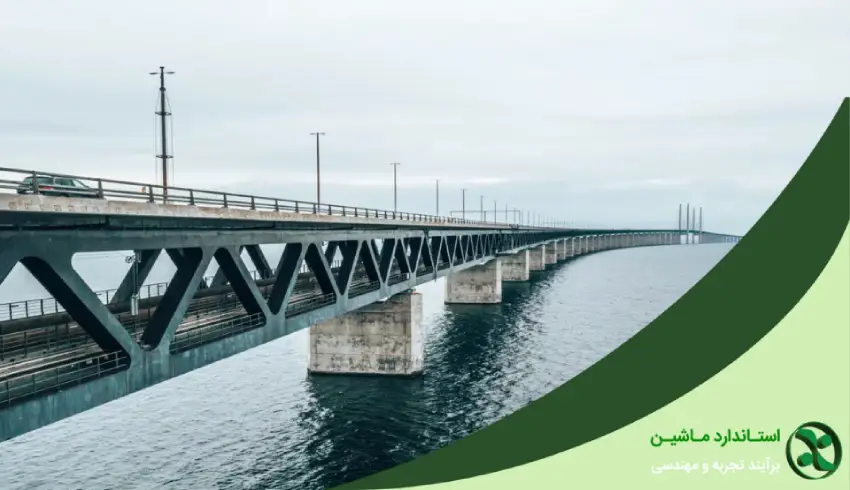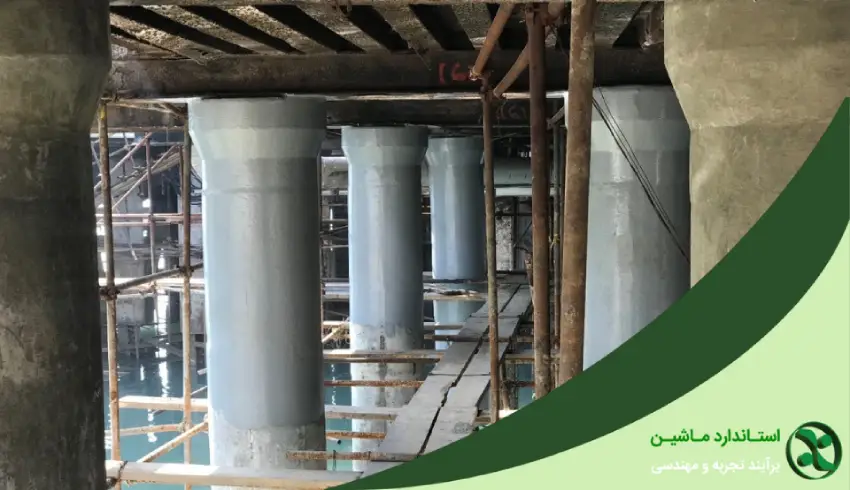In marine civil engineering projects such as ports, dams, bridge foundations, and coastal structures, one of the primary challenges engineers face is the successful execution of concrete placement in saturated and aquatic environments. Underwater concreting requires not only high technical expertise but also the selection of appropriate materials, specialized equipment, and precise execution methods to prevent cement washout, aggregate segregation, and loss of concrete strength.
The use of concrete in underwater environments aims to provide mechanical strength, long-term stability, and durability against corrosive agents and hydrostatic pressure. Various methods, including the tremie method, concrete bags, anti-washout concrete, and the use of specialized formworks to control concrete flow, are employed in this domain.
This article provides a detailed examination of the principles, methods, equipment, and execution considerations for underwater concrete placement, offering both scientific and practical insights to ensure safe, durable, and standard-compliant performance in your projects.
Underwater Concrete Placement
Placing concrete underwater is one of the most complex operations in civil and hydraulic engineering. In this method, concrete is placed directly in fully saturated or submerged environments without direct contact with air. Due to the presence of water, adhering to technical principles and using appropriate equipment to prevent segregation and washout of concrete components is crucial.
Why Is Underwater Concreting Challenging?
Several factors can affect the quality of concrete underwater:
-
Cement washout due to water flow
-
Aggregate segregation due to non-uniform concrete placement
-
Reduction in final concrete strength due to water infiltration
-
Difficulty in controlling concrete shaping and compaction
Therefore, employing specialized techniques and suitable admixtures is essential for successful underwater concreting.

Methods of Underwater Concreting
Underwater concreting, especially in marine and subsurface projects, requires specific and engineered methods. Depending on the project type, water depth, environmental flow, and available facilities, various methods are utilized:
-
Tremie Method
The most common method for underwater concreting. Concrete is delivered through a vertical pipe (tremie) to the placement site. The pipe’s end remains submerged in concrete to prevent direct contact with water and avoid washout.
-
Anti-Washout Concrete
This concrete type includes special admixtures that enhance resistance to cement and fine material washout. It’s suitable for projects lacking advanced equipment.
-
Concrete Bags (Fabric or Geotextile)
In certain cases, concrete is placed in durable bags and transported to the desired location, useful for bed stabilization or temporary structures.
-
Underwater Formwork
In specific projects, pre-fabricated and water-resistant formworks are used, and concrete is pumped or injected into them.
Key Considerations in Underwater Concreting
-
Proper Use of Tremie Pipe
-
The tremie pipe’s end must always remain embedded in the concrete mass to prevent direct contact with water.
-
The pipe diameter should match the concrete type and volume (typically between 20 to 30 cm).
-
Control the concrete drop height within the pipe to prevent component segregation.
-
-
Appropriate Mix Design
-
Concrete should have high workability to spread and compact easily underwater.
-
Use anti-washout admixtures like cellulose or soluble polymers to increase cohesion and resistance to water flow.
-
In projects requiring strong bonding between structural elements or filling underwater voids and joints, grout is a reliable and engineered solution.
-
Maintain a low water-to-cement ratio to ensure final concrete strength.
-
-
Suitable Cement Selection
In marine environments or areas with sulfate ions, use Type V or sulfate-resistant cement. Slow-setting cement can also be beneficial underwater to allow adequate placement time.
-
Proper and Resistant Formwork
If formwork is used, it must be water-resistant and well-sealed. Formworks should be designed to allow concrete to enter smoothly and air to escape.
-
Quality Control During Execution
Conduct slump tests, monitor concrete temperature, sample for compressive strength, and control execution time. Avoid excessive speed to prevent voids, segregation, or air entrapment.
-
Continuous and Professional Supervision
A specialized supervising engineer must oversee the entire underwater concreting process. Environmental conditions like water flow rate, execution depth, ambient temperature, and wind speed should be carefully assessed and monitored.
Adhering to these key considerations ensures successful underwater concreting and achieves the desired strength, durability, and safety in civil and marine projects.
Advantages and Applications of Underwater Concreting
Underwater concreting is an effective and irreplaceable solution in many civil projects. It enables construction in aquatic environments and is economical and technical when dewatering is impractical or costly.
Advantages:
-
No Need to Dry the Bed
In projects like dams or ports, drying the bed is impractical or very costly. Underwater concreting eliminates the need for waterproofing and large pumps.
-
Maintaining Structural Integrity
Using appropriate methods like the tremie or anti-washout concrete can create a cohesive and resistant concrete with low permeability, suitable for marine environments.
-
Time Efficiency
In time-constrained projects, this method allows continuous operations without dewatering, accelerating project execution.
-
Enhanced Safety in Certain Conditions
In scenarios where dry operations are hazardous or unsafe (e.g., riverbeds with strong currents), underwater concreting offers a safer alternative.
Applications:
-
Bridge foundations in rivers and lakes
-
Coastal walls and breakwaters
-
Bed stabilization in ports and docks
-
Foundations of marine structures (e.g., oil platforms)
-
Dams and spillways
-
Repairing, strengthening, or reconstructing damaged underwater structures
Limitations of Underwater Concreting
Despite its numerous advantages and widespread application, underwater concreting has limitations and challenges that, if overlooked, can compromise the quality and durability of the structure:
-
Cement Washout
A primary issue in underwater concreting is the washout of cement and fine materials due to water flow, leading to reduced cohesion, strength loss, and aggregate segregation, especially when improper methods or mix designs are used.
-
Component Segregation
If concrete is dropped freely or with high fall, its components may separate, resulting in non-uniform and weak concrete with voids and high permeability.
-
Need for Specialized Equipment and Higher Costs
Proper execution requires equipment like tremie pipes, concrete pumps, waterproof formworks, and special admixtures, increasing initial project costs and necessitating skilled personnel.
-
Difficulty in Quality Control
Underwater environments limit direct control over concrete placement, compaction, shaping, and leveling, requiring high experience, precise supervision, and indirect quality control methods.
-
Dependence on Environmental Conditions
Environmental factors like water flow intensity, execution depth, ambient temperature, and bed conditions significantly impact concrete quality. Unfavorable conditions may delay operations or increase risks.
-
Execution Speed Limitations
To maintain uniformity and prevent segregation, concrete placement speed must be controlled and relatively slow, potentially extending execution time in large-scale projects and affecting project schedules.

Conclusion
Underwater concreting combines engineering knowledge, execution experience, and meticulous selection of materials and methods. Although challenging, it remains the only viable and economical solution in many civil and marine projects. Understanding various methods, limitations, advantages, and especially attention to execution details like grouting and quality control, plays a decisive role in project success. Ultimately, each underwater project, with proper design, suitable materials, and precise execution, can transform into a strong, durable, and safe structure.


